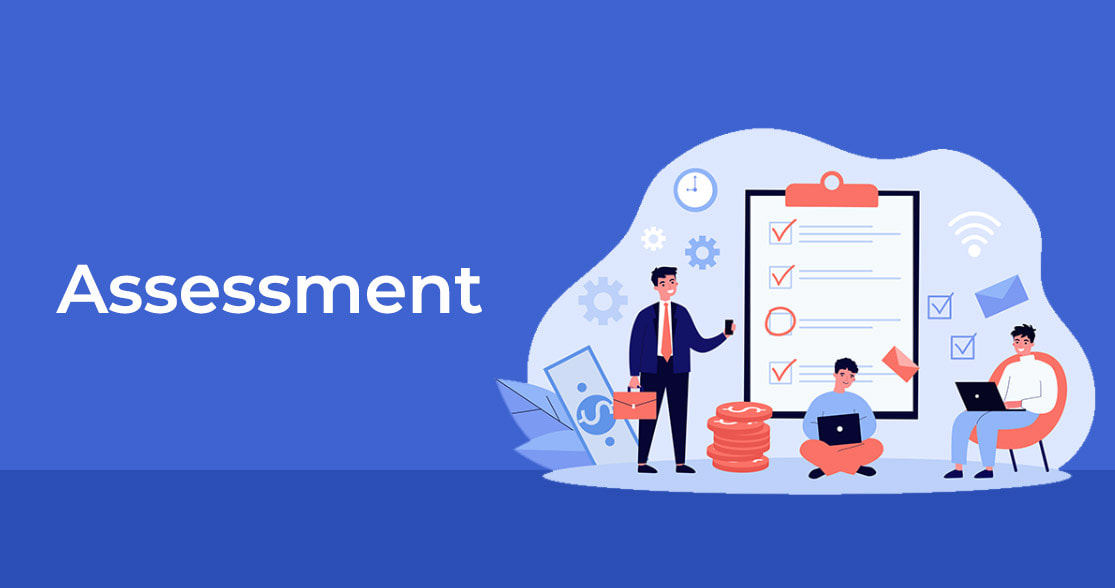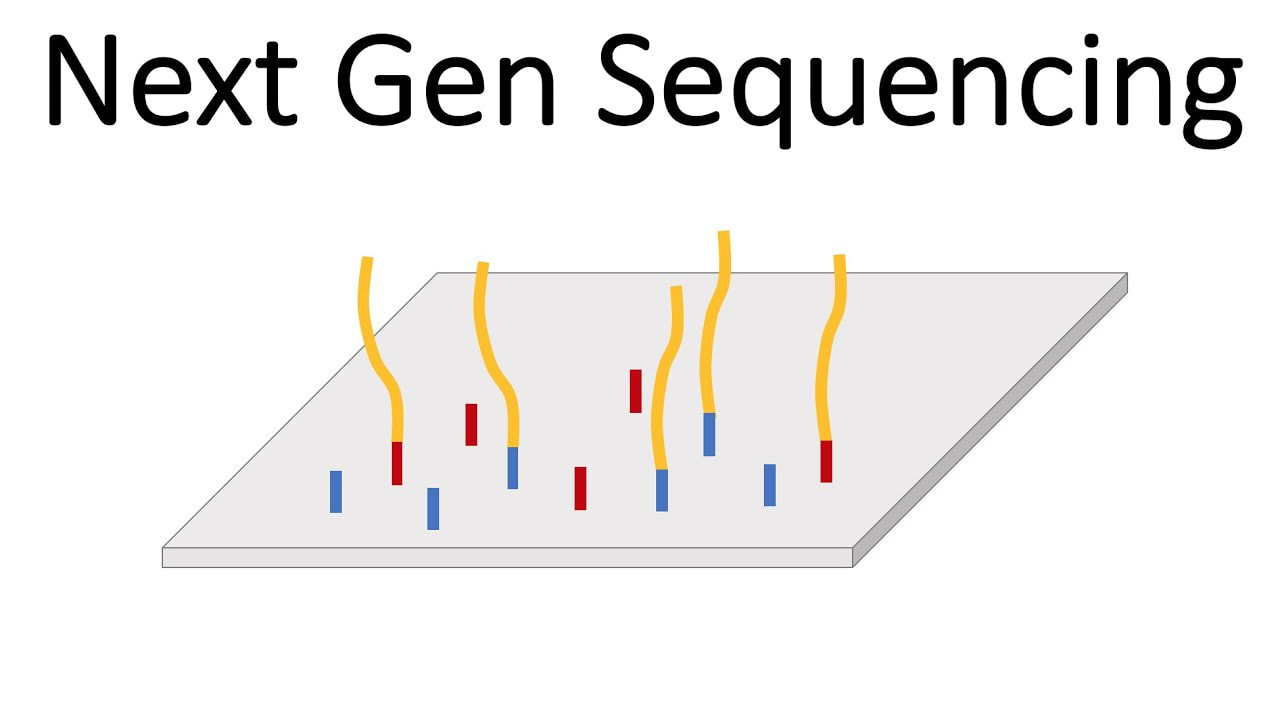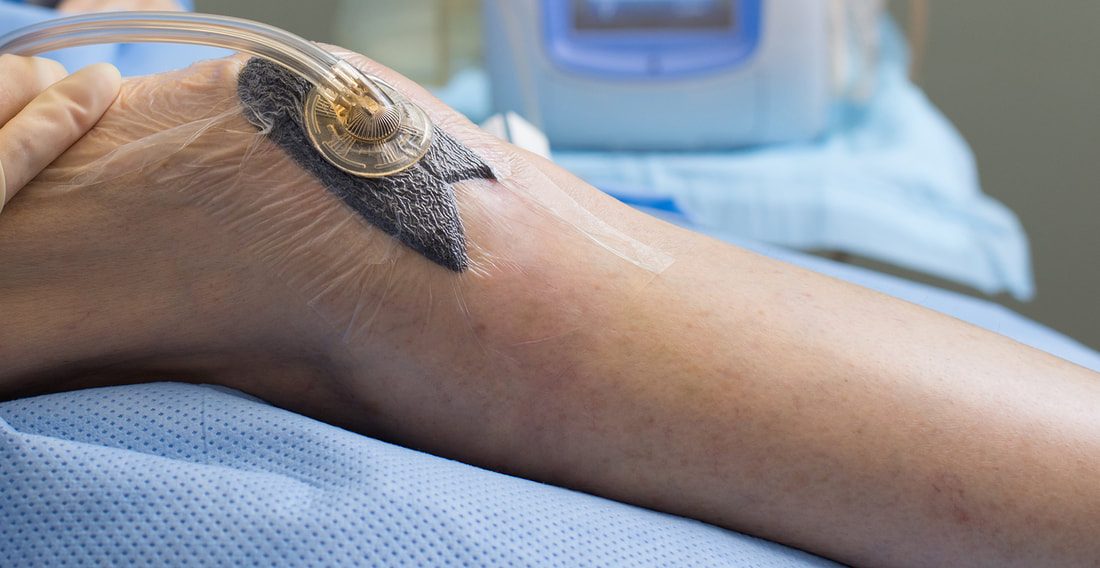Artificial Intelligence And Machine Learning Are Fueling Growth Of Assessment Services Market11/8/2023 The global Assessment Services Market is estimated to be valued at US$ 14.83 Bn in 2022 and is expected to exhibit a CAGR of 9.7% over the forecast period 2023-2030, as highlighted in a new report published by Coherent Market Insights.
Market Overview: Assessment services help companies evaluate candidates for recruitment based on attributes like critical thinking, decision making, problem solving etc. Employers use these tools to hire best talent aligned with organizational goals and culture. Services include cognitive ability tests, personality tests, situational judgement tests, remote proctoring and AI powered video interviews. Market key trends: The growing adoption of data-driven talent selection strategies coupled with developments in AI and machine learning is driving demand for assessment services. Use of algorithms and neural networks powered by big data helps analyze candidate attributes and person-organization fit more objectively. Virtual assessments are also gaining popularity due to convenience of remote proctoring. Predictive analytics provides insights into attrition risks, skills gaps and training needs. Integration of AR/VR technologies is further enhancing candidate experience and assessment accuracy. Customized solutions tailored for specific roles and industries is another notable trend in this market. Segment Analysis The assessment services market is segmented into online assessment and offline assessment. The online assessment segment dominated the market in 2022 and is expected to continue its dominance during the forecast period. This is mainly because online assessment helps evaluate candidates efficiently at a lower cost and provides flexibility in terms of time and location to candidates. Key Takeaways The global Assessment Services Market Insights is expected to witness high growth, exhibiting CAGR of 9.7% over the forecast period, due to increasing demand for efficient candidate screening and recruitment processes. Regional analysis North America dominated the global market in 2022 and is expected to continue dominating during the forecast period. This is due to the presence of major players along with high adoption of advanced assessment methods in the region. Asia Pacific is expected to be the fastest growing region due to growing industries and increasing focus on employing best talents. Key players Key players operating in the assessment services market are CEB, now part of Gartner, SHL, Hogan Assessments, Talent Q, a part of Korn Ferry, Cognizant, IBM Corporation, Pearson PLC, Mercer LLC, Deloitte, Korn Ferry, PwC, Prometric, DDI (Development Dimensions International), Mettl, Cubiks. The major players are focusing on various organic and inorganic growth strategies such as new product launches, partnerships, and expansions to increase their market share and remain competitive in the global market. Read more @ https://www.newsanalyticspro.com/projected-growth-in-online-assessment-services-to-boost-the-global-assessment-services-market/
0 Comments
The global UK Fashion Ecommerce Market is estimated to be valued at US$ 31.19 Billion in 2022 and is expected to exhibit a CAGR of 15.5% over the forecast period 2023-2030, as highlighted in a new report published by Coherent Market Insights.
Market Overview: The UK fashion ecommerce market offers a wide range of apparel, footwear and accessories online. Products available through these ecommerce platforms provide convenience and options to consumers. The market caters to changing fashion trends and consumer needs. Market key trends: One of the key trends in the UK fashion ecommerce market is the growing preference of consumers toward personalized and customized fashion offerings. Various platforms now allow customers to customize apparel and accessories as per their preferences regarding fit, styles, designs etc. This offers consumers unique products tailored to their individual needs and tastes. Furthermore, it also helps companies to better understand customer segments and demands. Segment Analysis The UK fashion ecommerce market is dominated by the women's wear segment which accounts for over 35% of the total market share. Women buyers account for the majority of online fashion shoppers in the UK. The women's wear segment is thriving due to changing fashion trends and increasing focus on aesthetic appeals among UK women. Key Takeaways The UK Fashion Ecommerce Market Demand is expected to witness high growth, exhibiting a CAGR of 15.5% over the forecast period of 2023-2030, due to increasing online penetration among UK shoppers and growing preference for branded fashion items. The UK represents the largest fashion ecommerce market in Europe. Regional analysis London dominates the UK fashion ecommerce market with over 30% share due to the high disposable incomes and fashion sensibilities of urbanites. Southeast England is the second largest region and is growing at a fast pace due to expanding ecommerce industry. Key players Key players operating in the UK fashion ecommerce market are H&M, Zalando, Amazon Fashion, Primark, Topshop, River Island, Missguided, PrettyLittleThing, ASOS, Boohoo, Next, Very, Marks & Spencer, John Lewis, New Look, JD Sports, Farfetch, Gymshark, Reiss, AllSaints. Players like ASOS and Boohoo have captured significant market shares by leveraging their strong direct-to-consumer platforms and product varieties. Read more @ https://www.newsanalyticspro.com/uk-fashion-ecommerce-market-size-status-top-emerging-trends-growth-and-business-opportunities/ Premium Intraocular Lenses Is Fastest Growing Segment Fueling The Growth Of Intraocular Lens Market11/7/2023 The global Intraocular Lens Market is estimated to be valued at US$ 719.98 Bn or Mn in 2023 and is expected to exhibit a CAGR of 7.2% over the forecast period 2023 to 2030, as highlighted in a new report published by Coherent Market Insights.
Market Overview: Intraocular Lens (IOLs) are thin, clear lenses implanted to replace the eye's natural crystalline lens and are used in cataract surgery. IOLs help improve vision and reduce dependency on spectacles. They are foldable and soft materials allow minimal invasive surgery and faster visual recovery. Market key trends: One of the key trends in the intraocular lens market is the rising prevalence of premium and technology advanced IOLs. Premium IOLs such as multifocal IOLs, toric IOLs, and accommodating IOLs are witnessing higher demand owing to their advanced optics and features. For instance, multifocal IOLs help reduce the dependency on spectacles for distance and intermediate vision after cataract surgery. Similarly, toric IOLs help reduce the need for spectacle correction of astigmatism. Accommodating IOLs attempt to add the eye’s ability to change focus automatically for reading and distance vision. Segment Analysis The global intraocular lens market is segmented into foldable intraocular lens and multifocal intraocular lens based on product type. The foldable intraocular lens segment dominated the market in 2022 and is expected to continue its dominance over the forecast period owing to its rising preferences among patients and ophthalmologists. Foldable intraocular lenses provide advantages like smaller incision size during cataract surgery and quick visual recovery for patients. Key Takeaways The global Intraocular Lens Market Growth is expected to witness high growth, exhibiting CAGR of 7.2% over the forecast period, due to increasing geriatric population and rising prevalence of cataracts globally. Regional analysis: North America dominated the global intraocular lens market in 2022 and is expected to continue its dominance over the forecast period. This is attributed to growing elderly population, higher adoption of technologically advanced intraocular lenses, and increasing healthcare expenditure in the region. Asia Pacific is expected to be the fastest growing region in the intraocular lens market during the forecast period owing to rise in medical tourism, large patient pool, and growing awareness regarding cataract treatment. Key players: Key players operating in the intraocular lens market are Alcon, Bausch & Lomb, Johnson & Johnson, Staar Surgical Company, Carl Zeiss Meditec, HOYA Corporation, Lenstec, Inc., Ophtec BV, Rayner Intraocular Lenses Limited, and HumanOptics AG. Alcon dominated the global intraocular lens market in 2022 owing to its wide product portfolio and strong geographical presence across the globe. Bausch & Lomb and Johnson & Johnson also have a significant market share in the intraocular lens market. Read more @ https://www.newsanalyticspro.com/demand-of-intravenous-therapies-to-fuel-growth-of-intravenous-solutions-market-demand/ The global Next Generation Sequencing Market is estimated to be valued at US$ 588.65 Bn in 2023 and is expected to exhibit a CAGR of 18% over the forecast period 2023 to 2030, as highlighted in a new report published by Coherent Market Insights.
Market Overview: Next Generation Sequencing (NGS) refers to the new DNA sequencing technologies that parallelize the sequencing process, producing millions or billions of sequences simultaneously. NGS has revolutionized genomic research and enabled breakthrough insights into human biology and disease. It is used in various applications like cancer diagnosis, genetic disorders diagnosis, reproductive health, drug discovery, agriculture, and more. Advantages of NGS over traditional sequencing methods include high speed and low cost of sequencing. NGS has the potential to deliver personalized medicine by enabling the identification of genomic alterations underlying disease risk and drug response for individual patients. Market key trends: One of the key trends in the Next Generation Sequencing Market is the growing adoption of NGS in clinical diagnostics. Traditionally, clinical applications have relied on Sanger sequencing. However, NGS is increasingly replacing Sanger sequencing due to its higher throughput and lower cost per sample. Many companies are developing NGS-based diagnostic assays for various diseases. For example, Thermo Fisher Scientific recently launched the Oncomine Cancer Sequencing Assay which sequences and analyzes more than 500 cancer-related genes in a single test. Another trend is the ongoing technological innovations to develop third generation or single-molecule sequencing technologies. Companies like Oxford Nanopore Technologies and Pacific Biosciences are developing nanopore and single-molecule real-time (SMRT) sequencing technologies which can sequence entire genomes rapidly at lower costs without amplification or fractionation. This has the potential to bring genome sequencing to clinics and empower precision medicine. Porter’s Analysis Threat of new entrants: The high costs of R&D and infrastructure investments pose barriers to entry for new companies. The presence of large established players also makes it difficult for new entrants to gain market share. Bargaining power of buyers: The presence of many technology providers and customized solutions gives buyers leverage to negotiate lower prices. However, specialized technical requirements reduce switching between providers. Bargaining power of suppliers: A small number of key suppliers for instruments and reagents exist, giving them some power in negotiations. However, differentiated offerings help balance this dynamic. Threat of new substitutes: While newer sequencing technologies continue to emerge, NGS still has advantages over Sanger sequencing and microarrays for a range of applications. Complements from bioinformatics also help sustain NGS's role. Competitive rivalry: Large firms intensely compete on technology innovation, value adds like analytics, and geographic expansion. Price pressure exists due to competition and commoditization of some offerings. Key Takeaways The global Next Generation Sequencing Market Share is expected to witness high growth, exhibiting a CAGR of 18% over the forecast period, due to increasing applications in drug discovery and precision medicine. The market size for 2023 is estimated at US$ 588.65 Bn. The North American region currently dominates the NGS market due to heavy investments in research activities by pharmaceutical and biotech companies in the US. However, Asia Pacific isexpected to witness the highest growth rate over the coming years backed by increasing R&D expenditure and infrastructure development in countries like China and India. Key players operating in the Next Generation Sequencing market are Thermo Fisher Scientific Inc., Agilent Technologies, Inc, bioMérieux SA, F. Hoffmann-La Roche Ltd , QIAGEN, Illumina, Inc., Oxford Nanopore Technologies plc., BGI, PerkinElmer Genomics, and Pierian. Leading firms are focusing on service expansions, partnerships, and technology innovations to strengthen their positions. Read more @ https://www.newsanalyticspro.com/the-growth-of-next-generation-sequencing-market-size-share-and-market-forecast/ The global Negative Pressure Wound Therapy (NPWT) Devices Market is estimated to be valued at US$ 16537.84 Mn in 2023 and is expected to exhibit a CAGR of 6.5% over the forecast period 2023 to 2030, as highlighted in a new report published by Coherent Market Insights.
Market Overview: Negative pressure wound therapy (NPWT) devices are being widely used in the treatment of acute and chronic wounds such as diabetic foot ulcers, pressure ulcers, surgical wounds, and trauma wounds. These devices help in removing excess exudates and infectious materials from the wound site, thereby promoting faster healing. Market key trends: One of the key trends in the NPWT devices market is the growing adoption of single-use NPWT devices. Single-use NPWT devices offer advantages such as elimination of costs associated with cleaning, disinfection, and sterilization of reusable devices between patients. They also reduce the risk of cross-contamination. Furthermore, technological advancements are being made to develop more innovative and portable NPWT devices. For instance, companies are developing smartphone-controlled NPWT devices that can be remotely monitored and adjusted. This allows for enhanced patient mobility and convenience. Segment Analysis: The global negative pressure wound therapy (NPWT) devices market has two key segments: Conventional NPWT and Single-Use NPWT. The conventional NPWT devices segment currently dominates the market, occupying around 70% share. Conventional NPWT devices are more cost-effective and reusable for multiple patients, making them a preferred option for hospitals and clinics. However, the single-use NPWT devices segment is expected to witness rapid growth during the forecast period. Concerns regarding infections caused due to repeated use andadded cost pressures on healthcare systems to reduce hospital stays are prompting providers to adopt single-use NPWT devices at a higher rate. Key Takeaways: The global Negative Pressure Wound Therapy (NPWT) Devices Market Demand is expected to witness high growth, exhibiting CAGR of 6.5% over the forecast period, due to increasing incidence of chronic wounds such as diabetic foot ulcers and pressure ulcers. Regional analysis: North America currently dominates the NPWT devices market, holding over 35% share. However, Asia Pacific is expected to witness the fastest growth during the forecast period supported by rising medical tourism, healthcare infrastructure development, and growing incidence of chronic diseases in highly populous countries like India and China. Key players: Key players operating in the negative pressure wound therapy (NPWT) devices market are 3M, Cardinal Health, Smith+Nephew, Genadyne, DeRoyal Industries, Inc., Medela AG, Convatec Inc., Mölnlycke Health Care AB, PAUL HARTMANN AG, ATMOS MedizinTechnik GmbH & Co. KG, Talley Group Ltd, Cork Medical, LLC, and Devon Medical Products. The market remains fairly competitive due to presence of multiple generic and branded players. However, 3M, Smith+Nephew, and Cardinal Health capture majority share owing to their strong sales and distribution networks worldwide. Read more @ https://creativeedge16.blogspot.com/2023/11/intravenous-fluid-therapy-is-fastest.html The global Intravenous Solutions Market is estimated to be valued at US$ 577,228 bn or Million in 2023 and is expected to exhibit a CAGR of 6.1% over the forecast period 2023 to 2030, as highlighted in a new report published by Coherent Market Insights.
Market Overview: Intravenous solutions are fluids administered through a vein via a needle or catheter. They are often used to provide essential nutrients, medications, or fluids to patients. Common uses include rehydration, correcting electrolyte imbalances, and ensuring nutrition is delivered for patients who cannot eat or absorb nutrients through the digestive system. Market key trends: One of the major trends in the intravenous solutions market is the increasing use of intravenous fluid therapy. Intravenous fluid therapy involves the administration of aqueous solutions containing electrolytes, sugars, and medications through an intravenous catheter. It is widely used for rehydration, maintenance of fluid balance, and correction of electrolyte abnormalities. The growing prevalence of dehydration, especially among infants, children, and elderly population is increasing the demand for intravenous fluid therapy. Furthermore, advantages such as quick absorption into bloodstream and controlled administration of fluids make intravenous fluid therapy preferable over oral rehydration therapy in many cases. Thus, intravenous fluid therapy represents the fastest growing segment in the global intravenous solutions market. Segment Analysis The global intravenous solutions market can be segmented based on type, therapy, end user and region. Based on type, the market can be categorized into total parenteral nutrition, peripheral parenteral nutrition and others. The total parenteral nutrition segment dominated the market in 2022due to increasing incidence of chronic diseases which require intravenous feeding as oral intake is not possible. Key Takeaways The global Intravenous Solutions Market Trend is expected to witness high growth, exhibiting CAGR of 6.1% over the forecast period, due to increasing prevalence of chronic diseases. Regional analysis North America dominated the intravenous solutions market in 2022 owing to growing geriatric population susceptible to chronic diseases in the US and Canada. Asia Pacific is expected to witness the fastest growth over the forecast period due to rising healthcare awareness and improving healthcare infrastructure in countries like China and India. Key players Key players operating in the intravenous solutions market are Baxter International Inc., ICU Medical. Inc, B. Braun Melsungen Ag, Grifols, S.A., Fresenius Kabi USA, LLC, Vifor Pharma Management Ltd, JW Life Science, Amanta Healthcare, Axa Parenterals Ltd, and Salius Pharma Private Limited, Pfizer, Inc, Otsuka Pharmaceutical Co., Ltd, Ajinomoto Co., Inc., B. Braun Melsungen AG, Soxa Formulations & Research Pvt.Ltd, Sichuan Kelun Pharmaceutical Co Ltd. Read more @ https://www.newsanalyticspro.com/demand-of-intravenous-therapies-to-fuel-growth-of-intravenous-solutions-market-demand/ The global Marine Lubricants Market is estimated to be valued at US$ 11,185.6 Mn or Bn in 2022 and is expected to exhibit a CAGR of 6.1% over the forecast period 2021 to 2028, as highlighted in a new report published by Coherent Market Insights.
Market Overview: Marine lubricants are oils used to reduce friction between the moving parts on a ship to enhance operational efficiency, improve performance, and extend machinery lifespan. They play an important role in reducing maintenance costs and downtime. Market key trends: One of the key trends fuelling growth in the marine lubricants market is the increasing application of high-performance lubricants in various machineries including main engines, hydraulic systems, greases, and others. Main engine cylinder oils and system oils require efficient lubricants to withstand extreme pressure and reduce sludge formation. Leading lubricant manufacturers are focusing on developing advanced lubricants with better corrosion protection, improved thermal stability, and enhanced load-carrying capabilities to cater to the evolving demand from the marine industry. Furthermore, strict environmental regulations regarding emission control are promoting the use of advanced low friction lubricants. Synthetic and biodegradable marine lubricants with lower environmental impact are gaining traction. Segment Analysis The global marine lubricants market is segmented by product type into engine oil, hydraulic fluid, grease, and other specialties. Within this segmentation, the engine oil segment dominates the market and accounted for more than 40% share of the global marine lubricants market in 2020. Engine oil is extensively used across all vessels for lubrication purposes during their operation and movement. With growth in maritime trade and shipping vessels, the demand for engine oil is expected to continue its dominance during the forecast period. Key Takeaways The global Marine Lubricants Market Insights is expected to witness high growth, exhibiting CAGR of 6.1% over the forecast period, due to increasing maritime trade activities globally. The Asia Pacific region is currently the fastest growing as well as dominating region in the global marine lubricants market. The region accounted for over 35% share of the global market in 2020 led by strong presence of container vessel fleet as well as commercial shipping across countries like China, Japan, and South Korea. Key players operating in the marine lubricants market are Lubmarine (Total Group), Royal Dutch Shell Plc, BP Marine, Chevron, ExxonMobil Corporation, Sinopec Corporation, Castrol, Gulf Marine and Industrial Supplies Inc., Lukoil Marine Lubricants, Quepet Lubricants, JX Nippon Oil & Energy Corporation, Idemitsu Kosan Co., Ltd., and IKO Marine Lubricant Supply Co. Ltd. Among these, ExxonMobil Corporation accounted for over 15% market share in 2020 owing to its large portfolio of marine lubricant brands and global supply chain network. Read more @ https://www.newsanalyticspro.com/growing-demand-for-marine-vessels-projected-to-boost-the-growth-and-demand/ The global uninterruptible power supply (UPS) market is estimated to be valued at US$ 8.23 Bn in 2022 and is expected to exhibit a 4.2% CAGR over the forecast period 2023 to 2030, as highlighted in a new report published by Coherent Market Insights.
Market Overview: Uninterruptible power supply or UPS systems provide emergency backup power to connected equipment when the main power fails or drops to unacceptable voltage levels. They help protect hardware, data, and productivity by conditioning utility or generator power. UPS systems offer reliability, security, and enhanced power that helps critical devices operate during a blackout. Market key trends: One of the key trends in the UPS market is the adoption of lithium-ion batteries. Lithium-ion batteries are increasingly replacing traditional lead-acid batteries in UPS systems due to their superior performance which includes higher storage capacity, lighter weight, longer lifespan and less maintenance. For example, lithium-ion batteries can last over 5 times longer than lead-acid batteries and don't have any memory effect issues. Their higher storage capacity also means that lithium-ion UPS systems can provide backup power for longer durations making them suitable for applications needing extended backup times. Segment Analysis The global uninterruptible power supply (UPS) market is segmented by product type, kVA range, and end use. By product type, online UPS systems dominate the market and hold around 60% share. Online UPS systems provide consistent power output and battery backup in case of power failures making them ideal for critical operations that require constant power supply without any interruptions. By kVA range, the 1-20 kVA segment accounts for the largest share of around 45%. UPS systems in the 1-20 kVA range find wide applications for servers, desktops, networking equipment, and small data centers. The growth of small and medium enterprises is fueling demand in this segment. Key Takeaways The global Uninterruptible Power Supply (UPS) Market Size is expected to witness high growth, exhibiting CAGR of 4.2% over the forecast period, due to increasing demand for backup power solutions from data centers and telecom industries. Regional analysis - North America dominates the UPS market with around 35% share attributable to early technology adoption and presence of leading market players in the region. Asia Pacific is expected to grow the fastest exhibiting a CAGR of over 5% during the forecast period led by rapid developments in digital infrastructure in countries like China and India. Key players - Key players operating in the uninterruptible power supply (UPS) market are Aspex Inc., Riello Elettronica SpA, Cyber Power Systems Inc., EATON Corporation PLC, General Electric Company, Emerson Electric Co., Mitsubishi Electric Corporation, Delta Electronics Inc., Hitachi Ltd., ABB Ltd., and Schneider Electric SE. These players are focusing on new product launches and mergers & acquisitions to gain market share. Read more @ https://www.newsanalyticspro.com/global-uninterruptible-power-supply-ups-market-demand-and-market-analysis/ The Multiple Input Multiple Output (MIMO) Market is estimated to be valued at US$ 10.93 Bn in 2023 and is expected to exhibit a CAGR of 10.5% over the forecast period 2023 - 2030, as highlighted in a new report published by Coherent Market Insights.
Market Overview: Multiple Input Multiple Output (MIMO) is a wireless technology that uses multiple antennas at both the source and the destination to improve communication performance. MIMO enables higher data transfer by taking advantage of multipath propagation to increase throughput. It is widely used in wireless applications such as Wi-Fi routers, wireless LAN, 3G/4G/5G, digital TV broadcasting, and audio/video streaming. Market Dynamics: The growth of the MIMO market is primarily driven by the increasing data traffic across the globe and subsequent deployment of 5G networks. According to a report by Cisco, global IP traffic is estimated to grow at a compound annual growth rate of 26% from 2019 to 2023. This surge in data usage has accentuated the need for advanced wireless technologies such as MIMO that offer greater network capacity and bandwidth to handle the traffic. Additionally, the widespread rollout of 5G networks worldwide is expected to bolster market growth during the forecast period. 5G requires higher bandwidth than 4G to support new technologies such as augmented reality, virtual reality, and autonomous vehicles. MIMO plays a key role in maximizing 5G network capacity and meets its throughput needs. Furthermore, MIMO finds extensive adoption in Wi-Fi routers and IoT applications due to its capability to concurrently transmit independent data signals over the same wireless channel, thereby improving performance. SWOT Analysis Strength: MIMO technology increases network capacity without additional spectrum or infrastructure investment. It provides strong data security and enhanced coverage by transmitting multiple data streams simultaneously on the same frequency. Advancements in 5G networks and smartphone chipsets have increased compatibility with MIMO systems. Weakness: Installation of large antenna arrays required for MIMO systems increases device and infrastructure costs. Interference between closely spaced antennas can reduce system efficiency. Complex signal processing algorithms require powerful CPUs and DSP chips, increasing overall system costs. Opportunity: Growing adoption of 5G networks worldwide is driving demand for MIMO technology to support higher data rates and network throughput. Emergence of IoT devices and smart cities will necessitate robust wireless connectivity solutions like MIMO. Threats: Alternate wireless technologies such as fiber-optic networks provide higher data rates without the interference issues faced by MIMO. Limited device compatibility and standardization issues can slow wider adoption of MIMO systems internationally. Key Takeaways The global Multiple Input Multiple Output (MIMO) Market Size is expected to witness high growth, exhibiting a CAGR of 10.5% over the forecast period, due to increasing demand for high-speed data services. MIMO technology enhances network capacity without additional cost or infrastructure requirements, allowing operators to meet growing data needs. Regional analysis The North America MIMO market accounted for the largest share of over 35% in 2023 and is projected to witness strong growth during the forecast period. Presence of leading technology firms and widespread 5G deployments in the US and Canada support regional growth. Meanwhile, Asia Pacific region is estimated to emerge as the fastest growing market, expanding at a CAGR of around 12.5% through 2030. This can be attributed to rising 4G and 5G subscriptions in China, India and other developing countries. Key players analysis Key players operating in the Multiple Input Multiple Output (MIMO) market are Qualcomm, Huawei, Intel, Samsung, Nokia, Ericsson, ZTE, NEC, Aviat Networks, Ceragon Networks, DragonWave, CommScope, Texas Instruments, NXP Semiconductors, Analog Devices, Broadcom, MediaTek, Murata Manufacturing, and Qorvo. Major companies are focusing on developing advanced 5G chipsets and antennas with enhanced MIMO capabilities to enable multi-gigabit data speeds. Read more @ https://www.newsstatix.com/multiple-input-multiple-output-mimo-market-to-witness-high-growth-demand-for-market-analysis/ Elastomeric Coating Market Growth Drivers, Business Strategies and Future Prospects 2021 to 202811/3/2023 The global Elastomeric Coating Market is estimated to be valued at US$ 11.5 Bn in 2022 and is expected to exhibit a CAGR of 14.1% over the forecast period, 2021 to 2028, as highlighted in a new report published by Coherent Market Insights.
Market Overview: Elastomeric coatings are flexible coatings that can stretch to almost twice their original length and return to their original form without adversely affecting the bond. They prevent cracking and peeling and provide superior adhesion along with weather resistance. The coatings are predominantly used on metal roofs, walls, facades, and other building components to protect them from weathering. Market key trends: One of the key trends in the elastomeric coating market is the growing demand for eco-friendly coatings. Regulatory restrictions on the use of Volatile Organic Compounds (VOCs) in coatings have propelled research towards bio-based and zero/low VOC formulations. Major players are focusing on developing sustainable elastomeric coatings using bio-based resins from plants and other natural sources. Segment Analysis The elastomeric coating market is segmented by type, application, and end-use industry. By type, the acrylic elastomeric coating segment dominates the market owing to its excellent weatherproofing and exterior durability properties, thus making it suitable for various residential, commercial, and industrial applications. By application, the wall coatings segment accounts for the largest share as elastomeric coatings offer superior adhesion to concrete, masonry, and stucco surfaces, thereby preventing moisture penetration. Key Takeaways The global Elastomeric Coating Market Insights is expected to witness high growth, exhibiting a CAGR of 14.1% over the forecast period from 2021 to 2028, due to increasing infrastructure development activities across residential and non-residential construction sectors. - Regional analysis: North America dominates the global market owing to the presence of leading coating manufacturers and increasing construction activities in the US and Canada. Asia Pacific exhibits the fastest growth rate attributed to rising industrialization and population growth in China, India, and other Southeast Asian countries. - Key players: Key players operating in the elastomeric coating market are BASF SE, Progressive Paintings Inc., The Dow Chemical Company, Sherwin Williams Company, PPG Industries Inc., Industria Chimica Adriatica SpA, Nippon Paints, Clariant, The Valspar Corporation, and Rodda Paints, among others. BASF SE dominates the market owing to its wide product portfolio and global distribution network. The global elastomeric coating market size was valued at USD 11.5 Billion in 2020 and is expected to grow substantially due to increasing infrastructure development activities across emerging economies in Asia Pacific and Central & South America regions over the forecast period. Read more @ https://www.newsanalyticspro.com/elastomeric-coating-market-driven-by-growing-infrastructure-sector-demand-and-growth/ |
AuthorAnjali Pawar Categories
All
|










